Mostra eventi che iniziano tra 08:00 – 20:00
Cerca
Prossimi eventi
Caricamento degli eventi
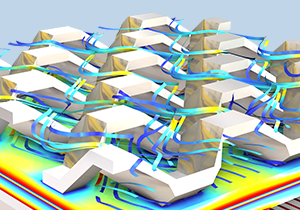
gen 6
| 08:00 CET
Solving Large Models in COMSOL Multiphysics®
COMSOL
Webinar
Online

gen 6–9
| 12:00 PST
CES
COMSOL
Exhibition
Las Vegas

gen 13–16
| 11:00 EST
Introduction to COMSOL Multiphysics®
COMSOL
Formazione
Online

gen 13
| 14:00 EST
Polymer Flow Modeling
COMSOL
Webinar
Online

gen 15
| 11:00 EST
COMSOL Day: Version 6.4
COMSOL
COMSOL Day
Online

gen 20
| 08:00 CET
The Basics of COMSOL® in 18 Minutes
COMSOL
Webinar
Online

gen 20–23
| 11:00 EST
Battery Modeling in COMSOL Multiphysics®
COMSOL
Formazione
Online
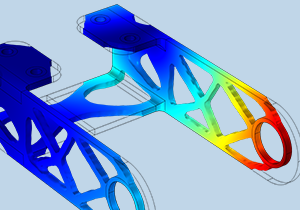
gen 22
| 14:00 EST
Shape and Topology Optimization with COMSOL Multiphysics®
COMSOL
Webinar
Online
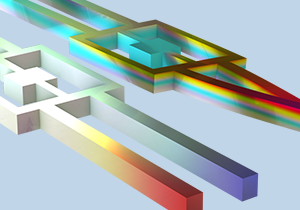
gen 27–30
| 11:00 EST
Structural Mechanics Modeling in COMSOL Multiphysics®
COMSOL
Formazione
Online

gen 27
| 11:30 EST
The Basics of COMSOL Multiphysics® in 18 Minutes
COMSOL
Webinar
Online
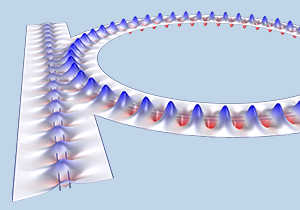
gen 29
| 14:00 EST
Simulating Optical Waveguides
Laser Focus World
Webinar
Online

feb 3
| 08:00 CET
Topology Optimization with COMSOL® in 18 Minutes
COMSOL
Webinar
Online
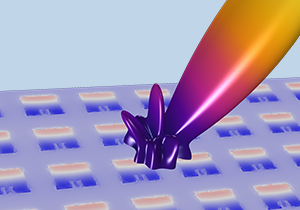
feb 10–13
| 11:00 EST
RF Modeling in COMSOL Multiphysics®
COMSOL
Formazione
Online
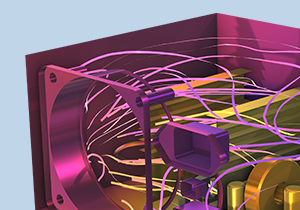
feb 17
| 08:00 CET
Heat Transfer Modeling with COMSOL® in 18 Minutes
COMSOL
Webinar
Online
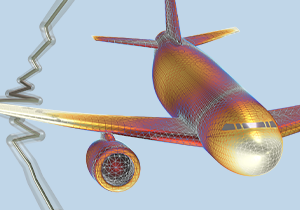
mar 3
| 08:00 CET
Modeling for Aerospace Engineering with COMSOL Multiphysics®
COMSOL
Webinar
Online

mar 3–6
| 11:00 EST
Introduction to COMSOL Multiphysics®
COMSOL
Formazione
Online

mar 3
| 14:00 EST
Editing, Repairing, and Combining Imported STL Files with CAD
COMSOL
Webinar
Online

mar 10–13
| 11:00 EDT
CFD Modeling in COMSOL Multiphysics®
COMSOL
Formazione
Online
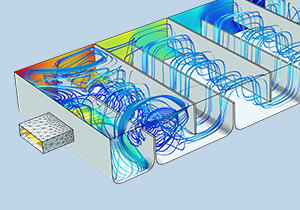
mar 17
| 09:00 CET
CFD Modeling with COMSOL Multiphysics® in 18 Minutes
COMSOL
Webinar
Online

mar 24–27
| 11:00 EDT
AC/DC Modeling in COMSOL Multiphysics®
COMSOL
Formazione
Online

apr 14–17
| 11:00 EDT
Introduction to COMSOL Multiphysics®
COMSOL
Formazione
Online
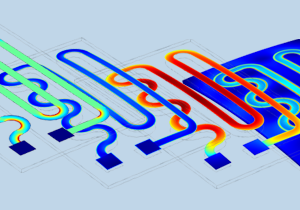
apr 21–24
| 11:00 EDT
Heat Transfer Modeling in COMSOL Multiphysics®
COMSOL
Formazione
Online
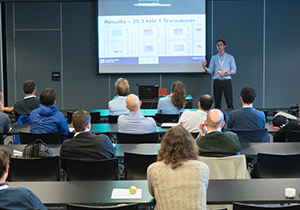
apr 28–29
| 09:00 EDT
Introduction to COMSOL Multiphysics®
COMSOL
Formazione
Burlington

mag 5–8
| 11:00 EDT
Acoustics Modeling in COMSOL Multiphysics®
COMSOL
Formazione
Online

mag 19–22
| 11:00 EDT
Introduction to COMSOL Multiphysics®
COMSOL
Formazione
Online

giu 23–26
| 11:00 EDT
Introduction to COMSOL Multiphysics®
COMSOL
Formazione
Online
Visualizzati 8 eventi su 26
Visualizzati 26 eventi su 26
| Date | Time | Title | Type | Host | Discipline |
|---|---|---|---|---|---|
| gen 6 | 08:00 |
Solving Large Models in COMSOL Multiphysics® |
Webinar | COMSOL-Online |
|
| gen 6–9 | 12:00 |
CES |
Evento speciale | COMSOL-Las Vegas |
|
| gen 13–16 | 11:00 |
Introduction to COMSOL Multiphysics® |
Formazione | COMSOL-Online |
|
| gen 13 | 14:00 |
Polymer Flow Modeling |
Webinar | COMSOL-Online |
|
| gen 15 | 11:00 |
COMSOL Day: Version 6.4 |
COMSOL Day | COMSOL-Online |
|
| gen 20 | 08:00 |
The Basics of COMSOL® in 18 Minutes |
Webinar | COMSOL-Online |
|
| gen 20–23 | 11:00 |
Battery Modeling in COMSOL Multiphysics® |
Formazione | COMSOL-Online |
|
| gen 22 | 14:00 |
Shape and Topology Optimization with COMSOL Multiphysics® |
Webinar | COMSOL-Online |
|
| gen 27–30 | 11:00 |
Structural Mechanics Modeling in COMSOL Multiphysics® |
Formazione | COMSOL-Online |
|
| gen 27 | 11:30 |
The Basics of COMSOL Multiphysics® in 18 Minutes |
Webinar | COMSOL-Online |
|
| gen 29 | 14:00 |
Simulating Optical Waveguides |
Webinar | Laser Focus World - Online |
|
| feb 3 | 08:00 |
Topology Optimization with COMSOL® in 18 Minutes |
Webinar | COMSOL-Online |
|
| feb 10–13 | 11:00 |
RF Modeling in COMSOL Multiphysics® |
Formazione | COMSOL-Online |
|
| feb 17 | 08:00 |
Heat Transfer Modeling with COMSOL® in 18 Minutes |
Webinar | COMSOL-Online |
|
| mar 3 | 08:00 |
Modeling for Aerospace Engineering with COMSOL Multiphysics® |
Webinar | COMSOL-Online |
|
| mar 3–6 | 11:00 |
Introduction to COMSOL Multiphysics® |
Formazione | COMSOL-Online |
|
| mar 3 | 14:00 |
Editing, Repairing, and Combining Imported STL Files with CAD |
Webinar | COMSOL-Online |
|
| mar 10–13 | 11:00 |
CFD Modeling in COMSOL Multiphysics® |
Formazione | COMSOL-Online |
|
| mar 17 | 09:00 |
CFD Modeling with COMSOL Multiphysics® in 18 Minutes |
Webinar | COMSOL-Online |
|
| mar 24–27 | 11:00 |
AC/DC Modeling in COMSOL Multiphysics® |
Formazione | COMSOL-Online |
|
| apr 14–17 | 11:00 |
Introduction to COMSOL Multiphysics® |
Formazione | COMSOL-Online |
|
| apr 21–24 | 11:00 |
Heat Transfer Modeling in COMSOL Multiphysics® |
Formazione | COMSOL-Online |
|
| apr 28–29 | 09:00 |
Introduction to COMSOL Multiphysics® |
Formazione | COMSOL-Burlington |
|
| mag 5–8 | 11:00 |
Acoustics Modeling in COMSOL Multiphysics® |
Formazione | COMSOL-Online |
|
| mag 19–22 | 11:00 |
Introduction to COMSOL Multiphysics® |
Formazione | COMSOL-Online |
|
| giu 23–26 | 11:00 |
Introduction to COMSOL Multiphysics® |
Formazione | COMSOL-Online |
|
Webinar on demand

Parameter Estimation for Nonlinear Materials
Webinar
Dec 11

Introducing COMSOL Multiphysics® Version 6.4
Webinar
Dec 10

Migliorare la progettazione e la gestione termica delle batterie
Webinar
Dec 10

Multiphysics Simulation of Power Transformers
Webinar
Dec 09
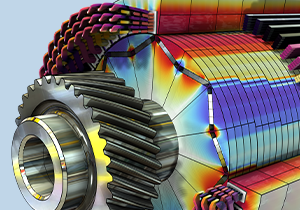
Multiphysics Simulation for Vehicle Electrification
Webinar
Dec 02

Optimising Manufacturing Processes Through Simulation
Webinar
Nov 26

Simulare per il biomedicale con COMSOL Multiphysics®
Webinar
Nov 26

Designing Efficient Electric Motors with COMSOL Multiphysics
Webinar
Nov 26

Efficient Battery Modeling with Surrogate Models
Webinar
Nov 19

Automating Your Modeling Workflow in COMSOL Multiphysics®
Webinar
Nov 18

The Basics of COMSOL Multiphysics® in 18 Minutes
Webinar
Nov 11

Modeling Pipe Flow & Heat in COMSOL Multiphysics®
Webinar
Nov 06

Progettare per l’industria aerospaziale con COMSOL Multiphysics®
Webinar
Nov 05

Modeling Gyroscopes and Accelerometers in COMSOL Multiphysics®
Webinar
Oct 30
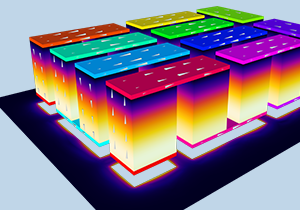
Personalizza le tue equazioni con COMSOL Multiphysics®
Webinar
Oct 22

Modeling and Simulation for Electric Motor Design
Webinar
Oct 15

Simulating Electrical Power Systems for the Grid
Webinar
Oct 14

Unravelling Chemomechanical Effects in Lithium-Ion Batteries
Webinar
Oct 09

Simulare sistemi elettrici di potenza
Webinar
Oct 08

Modeling Next-Generation Battery Technologies with COMSOL Multiphysics®
Webinar
Oct 06

Modeling Emerging Battery Technologies with COMSOL Multiphysics®
Webinar
Sep 25
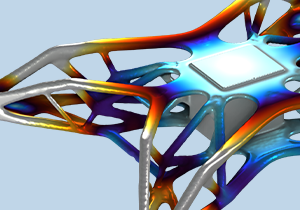
Ottimizzare le simulazioni di meccanica strutturale
Webinar
Sep 24

Modeling and Simulation of MEMS Devices
Webinar
Sep 23

Costruire app di simulazione e digital twin con COMSOL Multiphysics®
Webinar
Sep 16
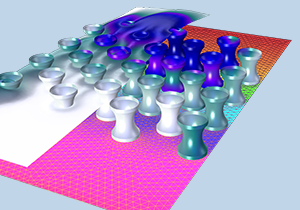
Modeling Reaction Kinetics and Pharmacokinetics with COMSOL Multiphysics®
Webinar
Sep 11
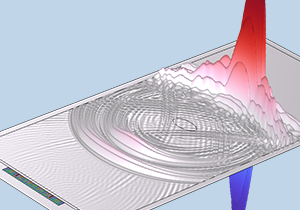
Modeling Ultrasound for Biomedical Applications
Webinar
Sep 09

Optimization of Thermal Management Systems
Webinar
Sep 03

Prediction of Electromagnetic Signatures of Naval Vessels with COMSOL Multiphysics
Webinar
Aug 28

Modellare sistemi ottici con COMSOL Multiphysics®
Webinar
Aug 28

Modeling Room Acoustics in COMSOL Multiphysics®
Webinar
Aug 19

Modeling and Simulation for Electric Motor Design
Webinar
Aug 14

Moisture Transport Modeling in COMSOL Multiphysics®
Webinar
Aug 07

Modeling Hydrogen Fuel Cells and Electrolyzers
Webinar
Aug 06

The Basics of COMSOL Multiphysics® in 18 Minutes
Webinar
Aug 05
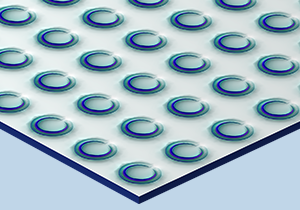
Modeling Acoustic Metamaterials in COMSOL Multiphysics
Webinar
Jul 31

Multiphysics Modeling of Power Electronics
Webinar
Jul 29

Fatigue and Durability Analysis Using COMSOL Multiphysics®
Webinar
Jul 24

Biomedical Modeling with COMSOL Multiphysics
Webinar
Jul 17
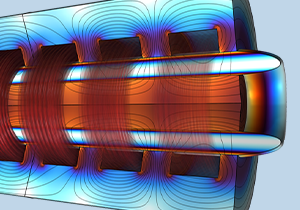
Understanding Liquid Metal Transport in Magnetic Fields — Simulating Magnetohydrodynamic Duct Flow
Webinar
Jul 11

Modeling Electric Motors and Drivetrains
Webinar
Jul 10

Memristor Modeling with COMSOL Multiphysics®
Webinar
Jul 02

Modeling Fluid Mixers and Stirred Tank Reactors in COMSOL Multiphysics®
Webinar
Jun 26
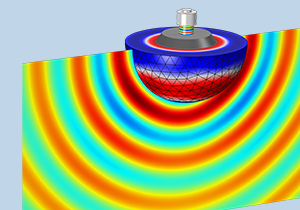
Underwater Acoustics
Webinar
Jun 12

Optimization in Structural Mechanics
Webinar
Jun 12

Hydrogen Technology Innovation with Simulation
Webinar
Jun 12

Modeling Hydrogen Fuel Cells and Electrolyzers
Webinar
Jun 12
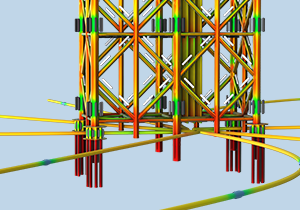
Modeling Chemical Reactions and Reacting Flows Using COMSOL Multiphysics®
Webinar
Jun 05

Migliorare le tecnologie per la decarbonizzazione con la simulazione
Webinar
Jun 04

Introduction to Multibody Dynamics Modeling with COMSOL Multiphysics
Webinar
May 28
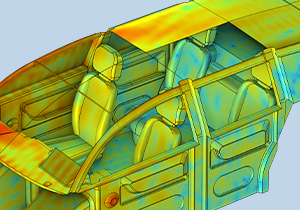
Automotive Acoustics Analysis Using COMSOL Multiphysics®
Webinar
May 27

Acoustics in Electronics Series, Part 4: Piezoelectric Devices
Webinar
May 20
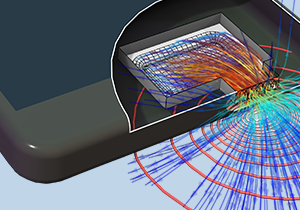
Analizzare i fenomeni acustici con la simulazione
Webinar
May 14

Improving Thermal Management of Batteries with COMSOL Multiphysics®
Webinar
May 09

Acoustics in Electronics Series, Part 3: Hearing Aids
Webinar
May 06

Acoustics in Electronics Webinar Series, Part 2: MEMS Speakers and Microphones
Webinar
Apr 16

The Basics of COMSOL Multiphysics® in 18 Minutes
Webinar
Apr 15

Wave & Ray Optics Modeling with COMSOL®
Webinar
Apr 09

Optimization in RF and Wave Optics
Webinar
Apr 09

Modellare le scariche elettriche
Webinar
Apr 09

Meshing Your Models in COMSOL Multiphysics®
Webinar
Apr 08

Multiphysics Simulation in Semiconductor Packaging
Webinar
Apr 03
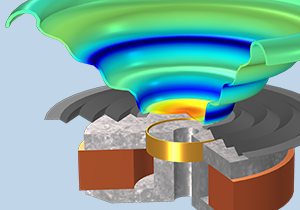
Acoustics in Electronics Webinar Series, Part 1: Loudspeakers
Webinar
Mar 25

Esperienze di simulazione nell'additive manufacturing: dal design al processo
Webinar
Mar 20
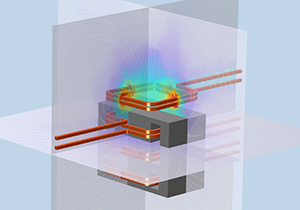
Simulating Electrical Power Systems for the Grid
Webinar
Mar 20
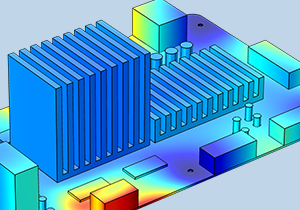
Multiphysics Modeling of Electronic Components
Webinar
Mar 20

Using Geometry Modeling Tools in COMSOL Multiphysics®
Webinar
Mar 18

Improving Thermal Management of Batteries with COMSOL Multiphysics®
Webinar
Mar 18

Modeling Chemical Reactions and Reacting Flows Using COMSOL Multiphysics®
Webinar
Mar 06

Integrating Frequency-Dependent Data into Time-Domain Acoustics Analysis
Webinar
Feb 27
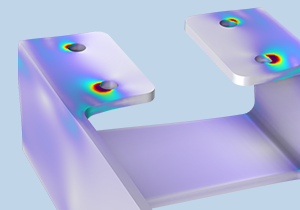
Introduction to Uncertainty Quantification
Webinar
Feb 26

Efficient Battery Modeling with Surrogate Models
Webinar
Feb 18

The Basics of COMSOL Multiphysics® in 18 Minutes
Webinar
Feb 13
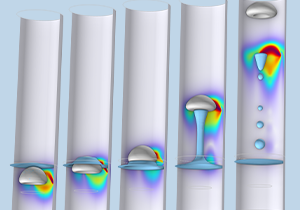
Designing a Magnetorheological-Fluid-Based Clutch Using COMSOL Multiphysics®
Webinar
Feb 13

Innovare le tecnologie dell'idrogeno con la simulazione
Webinar
Feb 11

Simulare il comportamento termico di dispositivi e processi
Webinar
Jan 30

Modeling Biochemical Sensors and Testing Devices with COMSOL®
Webinar
Jan 29

Modeling Optical Nanostructures with COMSOL Multiphysics®
Webinar
Jan 23

Electric Discharge Modeling
Webinar
Jan 21

Automotive Acoustics Analysis Using COMSOL Multiphysics®
Webinar
Jan 16

The Basics of COMSOL Multiphysics® in 18 Minutes
Webinar
Jan 14

Tutte le novità di COMSOL Multiphysics® 6.3
Webinar
Jan 10

Modeling Hydrogen Production, Storage and Utilization
Webinar
Aug 21
Visualizzati 6 eventi su 82
Visualizzati 82 eventi su 82
- Informazioni sui Prodotti
- Prodotti
- Tabella delle Funzionalità
- Tipologie di Licenze
- Requisiti di Sistema
- Cronologia delle Release
- La Società
- Chi è COMSOL
- Lavora con noi
- Stampa
- Contatti
- |
- Privacy Policy
- |
- Trademarks
- |
- Cookie Settings
- © 2025 da COMSOL. Tutti i diritti sono riservati
